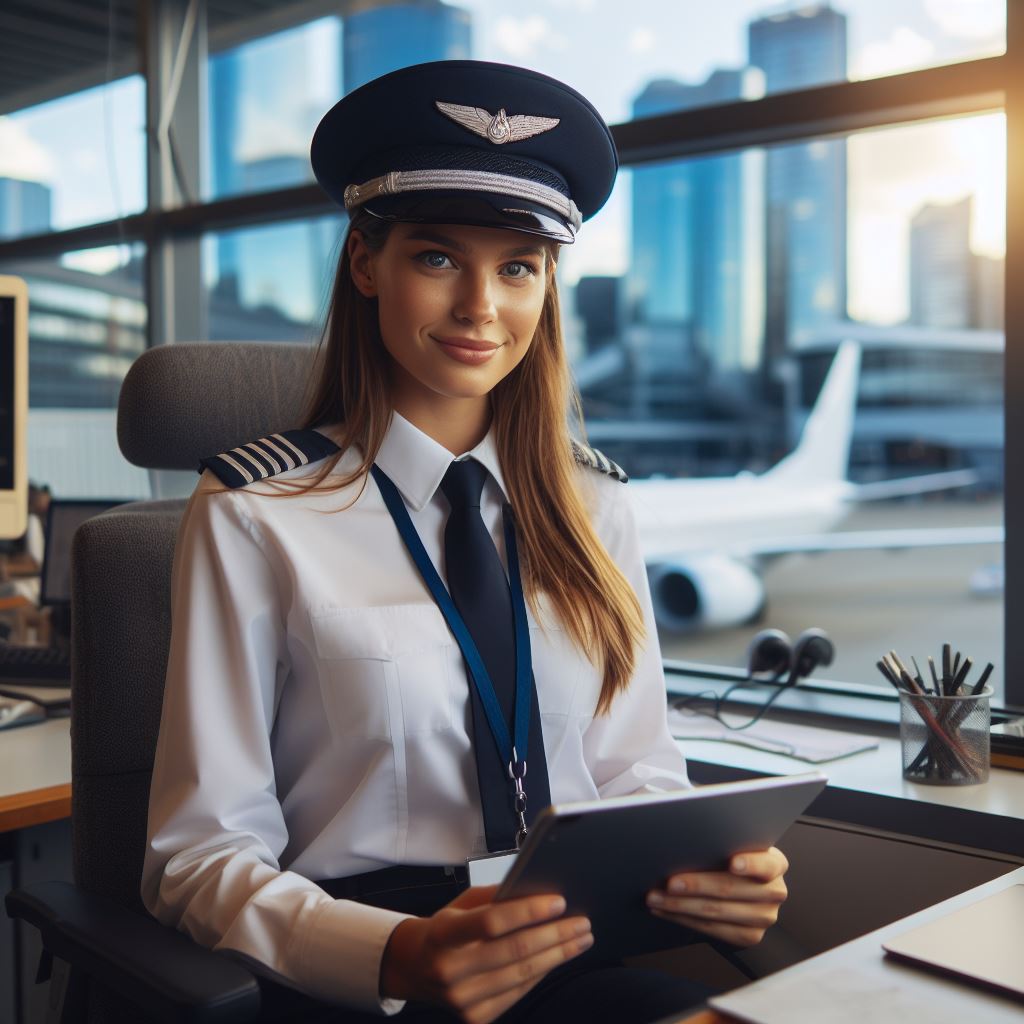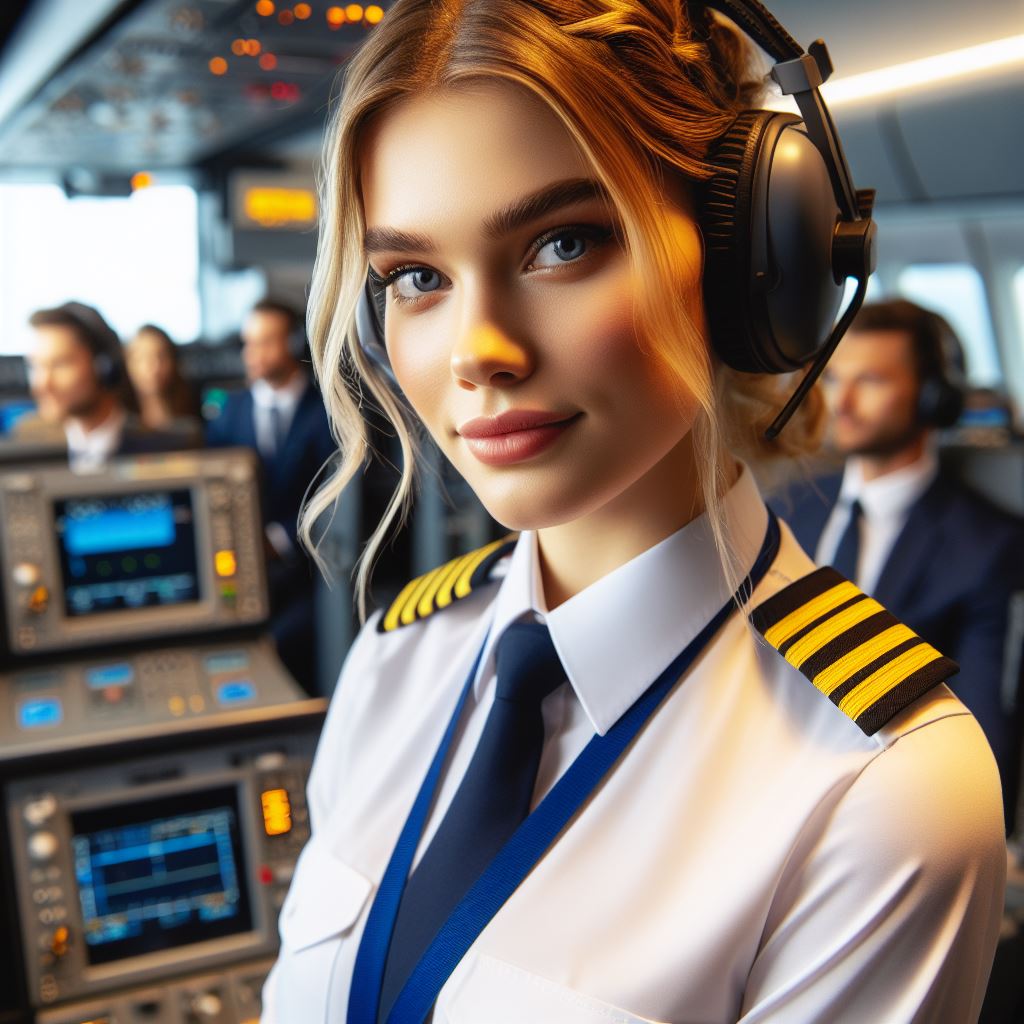Introduction
In the vast expanse of the aviation industry, where safety, efficiency, and precision are paramount, the role of pilot training stands as an indispensable cornerstone.
Each time an aircraft takes flight, it is not just the culmination of advanced engineering and technological prowess but also the culmination of extensive training and expertise embodied by the pilots at its helm.
Pilot training serves as the bedrock upon which the entire aviation ecosystem is built.
It encompasses a comprehensive curriculum that equips aspiring aviators with the knowledge, skills, and proficiency required to operate sophisticated aircraft in diverse and often demanding conditions.
From mastering the intricacies of flight instruments and navigation systems to honing decision-making abilities in high-pressure scenarios, pilot training programs are meticulously designed to prepare individuals for the multifaceted challenges of modern aviation.
In the context of the aviation industry, the importance of pilot training cannot be overstated.
At its core, pilot training is synonymous with safety.
It is the rigorous training regimen that instills in pilots the expertise and confidence needed to navigate aircraft safely through the skies, mitigating risks and ensuring the well-being of passengers and crew alike.
Moreover, pilot training plays a pivotal role in upholding the industry’s impeccable safety record, serving as a safeguard against human error and unforeseen contingencies.
Beyond safety, pilot training is also indispensable for operational efficiency and performance.
Well-trained pilots possess the requisite proficiency to optimize fuel consumption, adhere to flight schedules, and execute precise maneuvers, thereby contributing to the overall efficiency of airline operations.
Furthermore, pilot training fosters a culture of continuous improvement and innovation, driving advancements in aviation technology, procedures, and standards.
Overview of Australian Aviation Industry
Current state of the aviation industry in Australia
The Australian aviation industry stands at a fascinating juncture, characterized by a blend of challenges and opportunities that reflect its dynamic nature.
Currently, the industry grapples with the aftermath of global disruptions, including the COVID-19 pandemic, which significantly impacted air travel demand and operational dynamics.
Despite these challenges, signs of recovery are emerging, buoyed by the gradual reopening of borders and the rollout of vaccination programs.
Role of airlines in the country’s economy
Airlines play a pivotal role in the Australian economy, serving as vital conduits for connectivity, trade, and tourism.
They facilitate the movement of passengers and cargo, linking major cities, regional centers, and remote communities across the vast expanse of the continent.
Moreover, airlines contribute significantly to employment, tourism revenue, and economic growth, underscoring their importance as drivers of prosperity and development.
Growing demand for airline pilots
One of the notable trends in the Australian aviation industry is the growing demand for airline pilots.
As the industry rebounds from the impact of the pandemic and resumes growth trajectories, airlines face an increasing need for qualified pilots to meet operational requirements.
This demand is driven by factors such as fleet expansion, pilot retirements, and the emergence of new routes and markets.
Consequently, there is a heightened focus on pilot recruitment, training, and retention strategies to ensure an adequate supply of skilled aviators to sustain the industry’s growth momentum.
In essence, the Australian aviation industry stands resilient amidst challenges, propelled by the indispensable role of airlines in fostering economic prosperity and connectivity.
As the industry charts a course towards recovery and expansion, the demand for airline pilots emerges as a key factor shaping its trajectory, underscoring the critical importance of talent development and workforce planning in sustaining the industry’s upward trajectory.
Requirements to Become an Airline Pilot in Australia
To pursue a career as an airline pilot in Australia, aspiring candidates must meet certain qualifications and pass various examinations. Here are the key requirements:
Educational qualifications
- Completion of Year 12 or equivalent is usually required.
- A higher education degree is not mandatory but can be advantageous for career advancement.
Age requirements
- The minimum age to obtain a private pilot’s license (PPL) is 17 years.
- To gain a commercial pilot’s license (CPL), the minimum age requirement is 18 years.
- Airlines generally prefer pilots who are over 21 years old due to insurance restrictions.
Physical fitness and medical examinations
- Applicants must undergo a comprehensive medical assessment conducted by a Civil Aviation Safety Authority (CASA) approved medical examiner.
- Good eyesight, hearing, and overall physical health are crucial for piloting responsibilities.
English language proficiency
- English is the international language of aviation, and pilots must demonstrate fluency in both written and spoken English.
- Candidates need to pass the International Civil Aviation Organization (ICAO) level 4 English language test.
Pilot aptitude and psychometric tests
- Airlines and flight training academies conduct aptitude tests to assess a candidate’s cognitive abilities.
- Psychometric testing evaluates personality traits and psychological suitability for the demanding nature of the profession.
These requirements form the foundation of a pilot’s journey, ensuring competence and safety in the aviation industry.
Read: Trucker Tales: Stories from the Road
Training Process for Australian Airline Pilots
Overview of the training stages
Theoretical training
The training process for Australian airline pilots begins with theoretical training. Pilots are required to study various subjects such as aviation regulations, meteorology, airplane systems, and navigation. This classroom-based training provides pilots with a solid foundation of knowledge.
Flight simulation practice
After completing the theoretical training, pilots move on to flight simulation practice. In this stage, pilots will spend a significant amount of time in flight simulators, which replicate real-life flying conditions.
They will practice different flight maneuvers, emergency procedures, and scenarios to enhance their skills and decision-making abilities.
Actual flight training
Once pilots have gained sufficient experience in flight simulation practice, they will progress to actual flight training. This involves flying real airplanes under the guidance and supervision of experienced flight instructors.
Pilots will learn to handle different types of aircraft, perform takeoffs and landings, and navigate through various flight routes.
Accredited pilot training schools in Australia
Australia is home to several accredited pilot training schools that offer comprehensive and high-quality training programs. These schools provide state-of-the-art facilities, experienced instructors, and a supportive learning environment.
Some of the renowned pilot training schools in Australia include Flight Training Adelaide, Australian International Aviation College, and Basair Aviation College.
Duration of training programs
The duration of pilot training programs in Australia can vary depending on the type of license or certification pilots aim to achieve. On average, it takes around 12 to 18 months to complete the training program and obtain a Commercial Pilot License (CPL).
However, the duration may be shorter or longer based on individual progress and training requirements.
Costs associated with pilot training
Pilot training is a significant investment, and candidates should be prepared for the associated costs. Training fees vary among different flight schools, but on average, the cost of training for a CPL can range from AUD 70,000 to AUD 150,000.
These costs cover tuition, flight hours, simulator sessions, study materials, and licensing fees.
In fact, the training process for Australian airline pilots includes theoretical training, flight simulation practice, and actual flight training. There are accredited pilot training schools in Australia that offer comprehensive programs.
The duration of training programs can vary, and candidates should be prepared for the costs associated with pilot training.
Your Personalized Career Strategy
Unlock your potential with tailored career consulting. Get clear, actionable steps designed for your success. Start now!
Get StartedRead: Day in the Life of an Aussie Train Driver
Delve into the Subject: Sustainability in Logistics: Aussie Focus
Challenges Faced During Pilot Training
When it comes to pursuing a career as an airline pilot, aspiring individuals must be prepared to face various challenges throughout their training journey.
These challenges can range from the competitive nature of pilot training programs to the psychological and mental obstacles that pilots must overcome. In this section, we will explore some of the significant challenges faced by individuals during pilot training.
Competitive Nature of Pilot Training Programs
Pilot training programs are highly competitive, with a limited number of spots available for aspiring pilots. This competitiveness means that candidates must possess exceptional skills, knowledge, and aptitude to secure a position.
The intense competition can create pressure and stress among trainees, driving them to perform their best at all times.
Time Commitment and Rigorous Schedule
Pilot training demands a significant time commitment and follows a rigorous schedule. Trainees are required to complete a specified number of flight hours, ground schooling, and simulator sessions.
Balancing these training activities with personal commitments can be challenging, requiring a high level of dedication and time management skills.
Financial Constraints
One of the biggest challenges faced by individuals during pilot training is the financial aspect. Acquiring a pilot’s license and completing the necessary training can be quite expensive.
From flight fees to educational materials and accommodation, the overall cost of pilot training can place a substantial financial burden on aspiring pilots. Many individuals have to seek financial assistance or take loans to fulfill their dream of becoming a pilot.
Psychological and Mental Challenges
Pilot training is not just physically demanding, but it also poses psychological and mental challenges. Trainees must exhibit exceptional situational awareness, decision-making skills, and the ability to handle high-stress situations effectively.
Coping with the pressure of responsibility, dealing with possible failures, and managing the mental strain can be mentally taxing for aspiring pilots.
Overcoming the challenges faced during pilot training requires dedication, perseverance, and a passion for aviation.
The competitiveness of pilot training programs, time commitment, financial constraints, and psychological obstacles can make the journey challenging for aspiring pilots.
However, by recognizing and addressing these challenges, individuals can develop the necessary skills and mindset to succeed in their pursuit of becoming airline pilots.
Read: How to Become a Train Driver in Australia

You Might Also Like: Study Paths to Become a Logistics Manager
Career Opportunities for Australian Airline Pilots
The aviation industry in Australia offers promising job outlook for aspiring airline pilots. With the constant growth in air travel and the increasing demand for flights, there is a consistent need for skilled pilots to fly commercial aircraft.
Job Outlook in the Aviation Industry
According to industry experts, the job outlook for Australian airline pilots is quite favorable.
The aviation industry is experiencing steady growth, with more people choosing air travel as their preferred mode of transportation.
This growth has created a demand for pilots, both in domestic and international airlines.
The continuous expansion of air travel not only within Australia, but also globally, has created numerous employment opportunities for pilots.
This trend is expected to continue in the foreseeable future, which means that the demand for pilots will remain strong.
Australian airlines are also expanding their fleets to meet the growing demand.
This expansion translates to more job openings for pilots, as airlines aim to maximize their operational capacity.
Airline Pilot Employment Options
When it comes to employment options, Australian airline pilots have various possibilities. They can choose to work for major commercial airlines, regional airlines, or even charter companies.
Major airlines, such as Qantas and Virgin Australia, offer stable and lucrative employment opportunities for pilots. These airlines operate a large number of flights and have well-established routes, providing pilots with consistent work schedules and competitive salaries.
Stand Out with a Resume That Gets Results
Your career is worth more than a generic template. Let us craft a resume and cover letter that showcase your unique strengths and help you secure that dream job.
Get HiredRegional airlines, on the other hand, focus on serving smaller towns and cities within Australia. While the salary may not be as high as in major airlines, regional flying offers pilots the chance to gain valuable experience and build flight hours, which are essential for career progression.
Charter companies provide another employment option for Australian airline pilots. These companies typically offer private jet services or special charter flights.
Although the work may not be as regular as in commercial airlines, pilots often enjoy more flexibility in their schedules and the opportunity to fly high-profile clients.
Career Development and Advancement Opportunities
For aspiring Australian airline pilots, the aviation industry offers plentiful opportunities for career development and advancement.
Once pilots gain experience and accumulate the required flight hours, they can progress to higher-ranking positions within their airline.
They may have the chance to become captain or first officer on larger aircraft, leading to increased responsibility and higher pay.
Moreover, pilots can choose to specialize in specific areas of aviation, such as cargo operations, flight training, or aircraft maintenance.
These specializations can open the door to alternative career paths within the industry.
Additionally, Australian airline pilots can explore international opportunities.
The global demand for pilots is not limited to Australia, and pilots with experience are highly sought after by airlines around the world.
This opens up the possibility of working for international airlines or even relocating to fly in different countries.
In summary, the career opportunities for Australian airline pilots are promising due to the positive job outlook in the aviation industry.
With various employment options and the potential for career development and advancement, aspiring pilots have an exciting future ahead in this dynamic field.
Read: Impact of Tech on Train Driving in Oz
Conclusion
We’ve explored the intricate landscape of Australian airline pilot training and the broader aviation industry, uncovering key insights and trends that shape its trajectory.
We’ve highlighted the pivotal role of pilot training in ensuring safety, efficiency, and innovation within the industry, emphasizing its significance in upholding the highest standards of professionalism and competence.
Moreover, we’ve underscored the critical role of airlines in driving economic growth, connectivity, and prosperity across the country, reaffirming their indispensable position within the national infrastructure.
For aspiring Australian airline pilots, this journey is both challenging and rewarding.
It demands dedication, perseverance, and a commitment to excellence.
However, amidst the challenges lie abundant opportunities for personal and professional growth, as well as the fulfillment of a lifelong dream of taking to the skies.
As you embark on this exhilarating journey, remember the importance of thorough research, preparation, and continuous learning.
Arm yourself with knowledge, seek mentorship from experienced aviators, and remain steadfast in your pursuit of excellence.
The path to becoming an airline pilot may be demanding, but with determination and resilience, it is undoubtedly attainable.
In closing, I encourage aspiring Australian airline pilots to embrace the adventure that lies ahead, to pursue their dreams with unwavering passion, and to seize every opportunity to soar to new heights.
The skies await your presence, and with dedication and perseverance, the boundless horizons of aviation are yours to explore.




